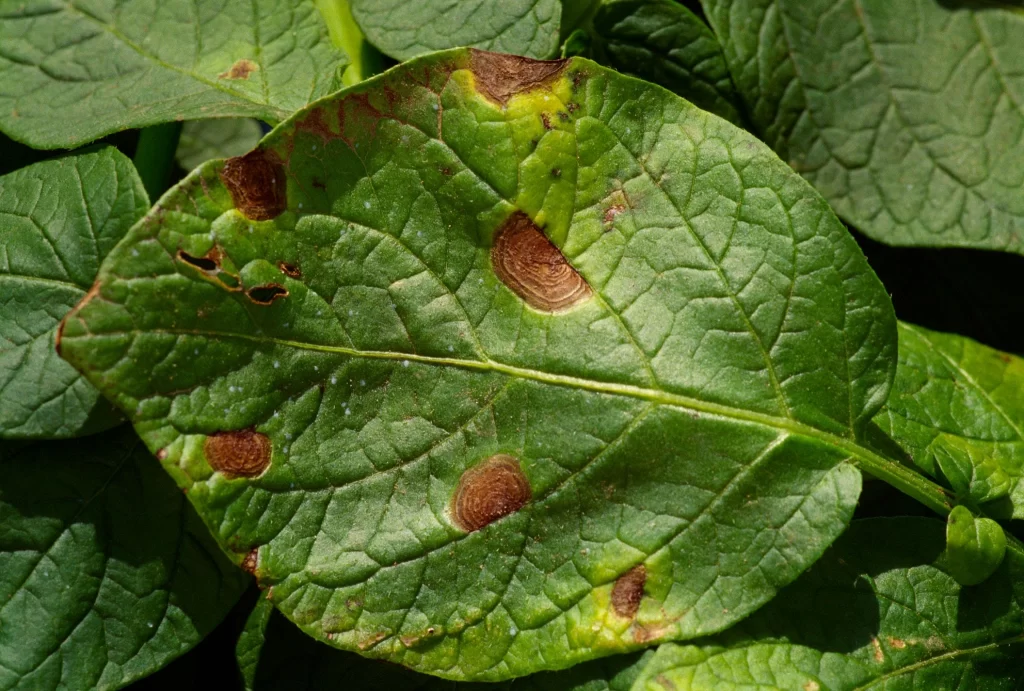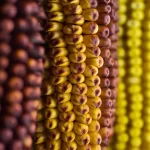Alternaria solani
Introduction
Alternaria solani is a fungal pathogen that causes early blight in tomato and potato plants, leading to significant yield reductions if left uncontrolled [1]. This disease is particularly relevant for greenhouse growers and crop consultants, as it can thrive in warm and humid conditions. The economic impact of Alternaria solani is considerable, with losses of 30-50% of immature fruit reported in some cases [2].
In this blog, we will discuss the symptoms, life cycle and infection stages, growth conditions, prevention and control methods, and conclude with some recommendations for growers.
Table 1: Common hosts and their susceptibility to Alternaria solani
|
Plant |
Susceptibility |
|
Tomato |
High |
|
Potato |
High |
|
Eggplant |
Moderate |
|
Pepper |
Moderate |
|
Tobacco |
Low |
We provide great overviews of many agricultural microorganisms. Subscribe to stay updated!
Symptoms of Early Blight
Alternaria solani causes small green to dark brown spots on leaves, often with a distinctive “bullseye” pattern (however, not all lesions have the “bullseye” pattern). As early blight progresses, these spots enlarge and may be surrounded by a yellow halo. In severe cases, entire leaves may turn yellow and fall off, leading to significant defoliation and exposing the fruit to potential sunscald. The pathogen can also cause stem lesions and fruit rot on tomato plants and tuber blight on potato plants [2]–[5].
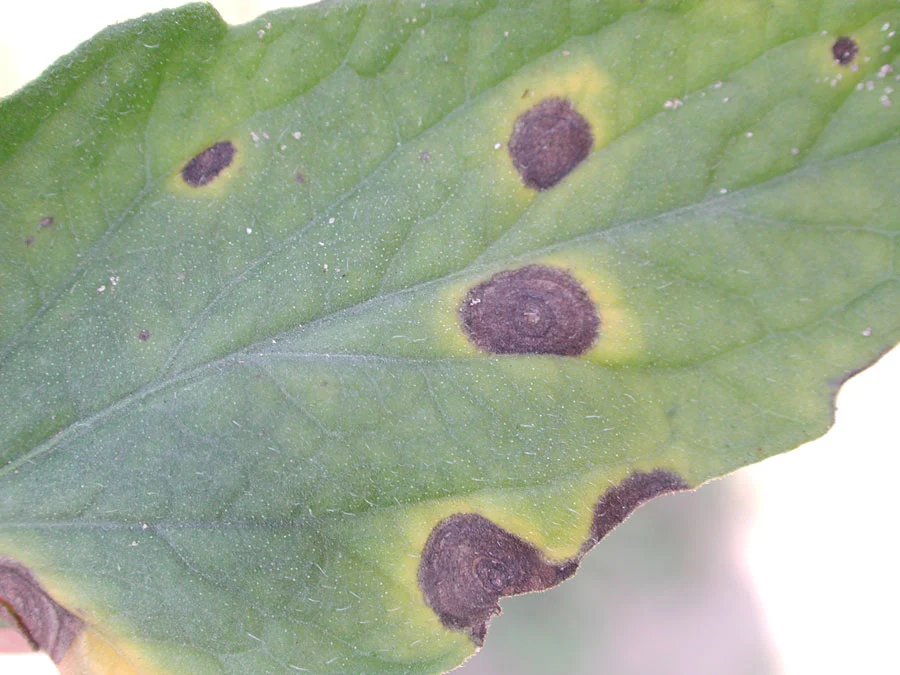
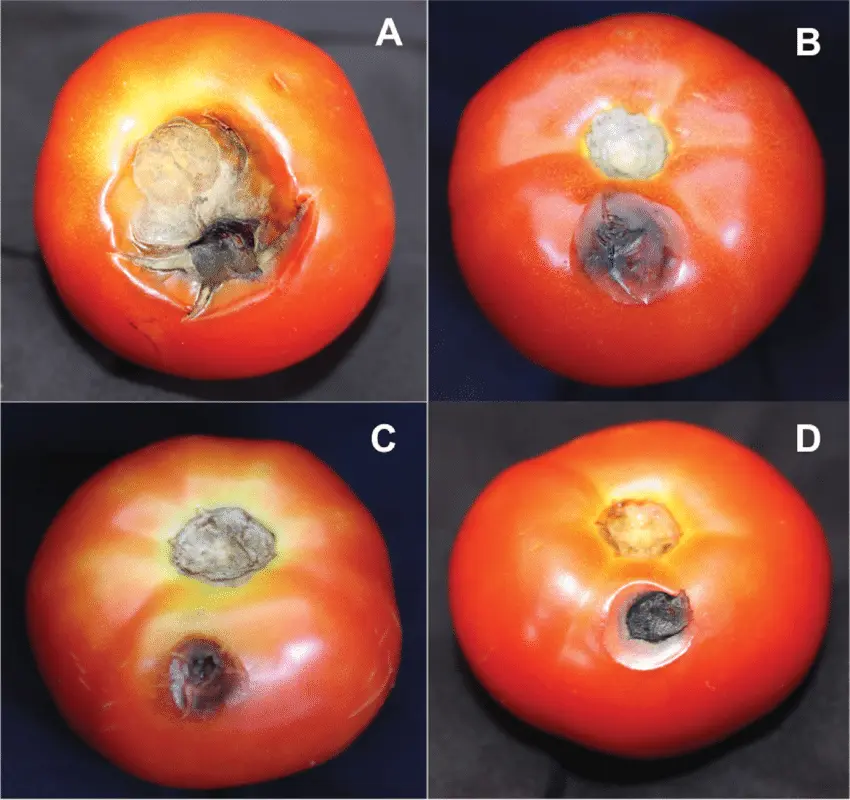
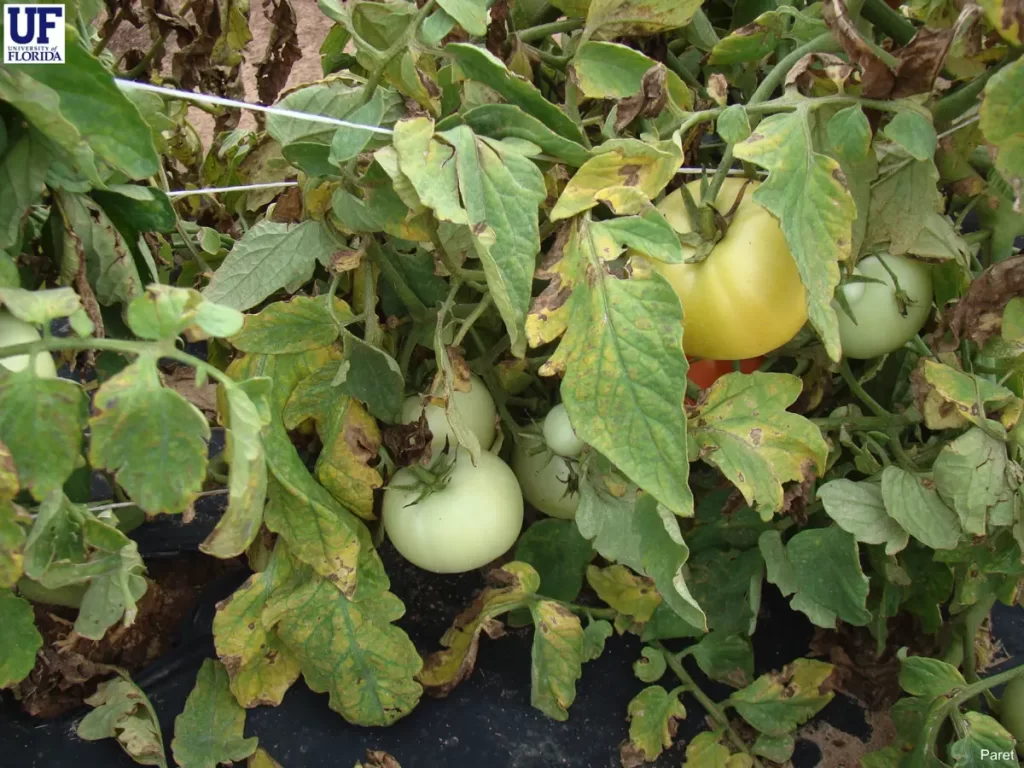
Life Cycle and Infection Stages of Alternaria solani
Alternaria solani has a polycyclic life cycle, meaning it can produce several infection cycles within a single growing season. The fungus overwinters on infected plant debris and can also survive in soil. When environmental conditions become favourable, it produces conidia or small pieces of itself dispersed by wind or splashing water. These conidia or pieces can germinate on the surface of the host plant and penetrate the plant’s tissue and invade an area, leading to an infection [6], [7].
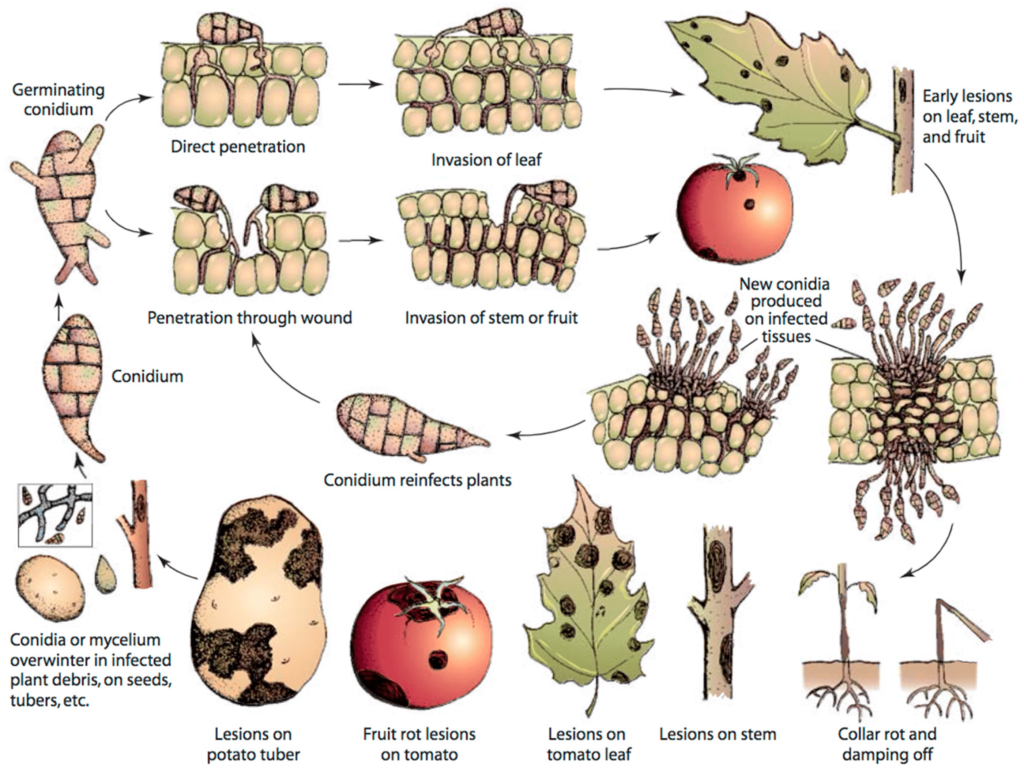
The pathogen secretes enzymes and toxins to facilitate infection, penetrating plant cell membranes. After successful infection, the fungus grows within the plant, causing the characteristic disease symptoms. It then produces more spores, initiating a new infection cycle [6], [7].
Growth Conditions for Alternaria solani
Alternaria solani thrives in warm, humid conditions, typically between 24-29°C (75-84°F) with high relative humidity. Note that the pathogen can germinate in 40 minutes to two hours when optimal conditions are met [4], [6]. It is most active during periods of prolonged leaf wetness, such as those caused by heavy dew, rainfall, or overhead irrigation. Such conditions provide an ideal environment for the spores to germinate and infect the host plant [4], [6], [7].
Methods of Prevention and Control
Preventative measures are the most effective means of controlling early blight [1]–[4], [6].
Cultural Practices: Regularly remove and destroy infected plant debris to eliminate overwintering sites for the fungus. Implement crop rotation to disrupt the pathogen’s life cycle.
Scout and Test: Early detection helps detect the pathogen before it spreads to other areas. Lab confirmation can help distinguish between different pathogens if needed.
Irrigation Management: Avoid irrigation which can facilitate spore dispersal. Water crops early in the day to allow leaves to dry before nightfall. Try to avoid working with plants when wet. If available, use the TOMcast program.
Resistant Varieties: Use varieties of crops bred for resistance to Alternaria solani. For example, Mountain Supreme, Mountain Fresh, Plum Dandy, Mountain Magic, and Defiant PhR.
Fungicides: Use fungicides as a preventative measure or when disease symptoms first appear. Follow label instructions carefully to prevent fungicide resistance development.
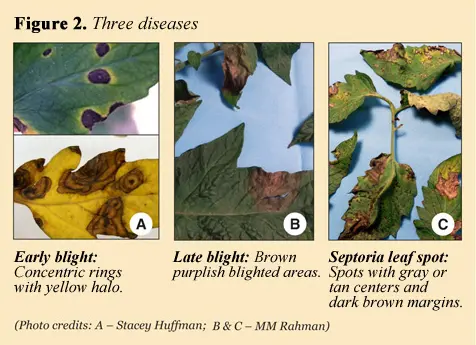
Conclusion
Alternaria solani poses a significant threat to greenhouse growers worldwide. By understanding its life cycle, growth conditions, and the symptoms it causes, you can take steps to prevent and control this fungal pathogen. By doing so, you can safeguard the health of your plants and the productivity of your greenhouse.
Keywords: Alternaria solani, Greenhouse, Fungal Pathogen, Prevention, Control, Tomato, Potato, Eggplant, Pepper, Tobacco.
Disclaimer
The information we present in Pathogen Profile is based on collating published peer-reviewed scientific literature, and sources we think are reliable. This is by no means an exhaustive review of pathogens. Pathogen Profile gives a small glimpse of what is known about pathogens. We encourage growers to do more research on the pathogens concerning their crops and hydroponic systems. We are not plant pathologists; thus, the information presented in the Pathogen Profile should not be used as professional advice to treat pathogens or operate your system.
References
-
Li, Y. (2012). Early Blight of Tomato. New Haven, CT. Retrieved from https://portal.ct.gov/-/media/CAES/DOCUMENTS/Publications/Fact_Sheets/Plant_Pathology_and_Ecology/EARLYBLIGHTOFTOMATO032912pdf.pdf
-
University of Massachusetts Amherst. (2013). Solanaceous, Early Blight. UMass Extension Vegetable Program. Retrieved from https://ag.umass.edu/vegetable/fact-sheets/solanaceous-early-blight
-
Hudelson, B. (2012). Early Blight. Wisconsin Horticulture Extension. Retrieved from https://hort.extension.wisc.edu/articles/early-blight/
-
Utah State University EXTENSION. (2020). Early Blight. Utah Vegetable Production & Pest Management Guide. Retrieved from https://extension.usu.edu/vegetableguide/tomato-pepper-eggplant/early-blight
-
OMAFRA. (2009). EARLY BLIGHT. Ontario Crop IPM. Retrieved from http://www.omafra.gov.on.ca/IPM/english/tomatoes/diseases-and-disorders/early-blight.html#advanced
-
Kemmitt, G. (2002). Early Blight of Potato and Tomato. The Plant Health Instructor. Retrieved from https://www.apsnet.org/edcenter/disandpath/fungalasco/pdlessons/Pages/PotatoTomato.aspx
-
Adhikari, P., Oh, Y., & Panthee, D. R. (2017). Current status of early blight resistance in tomato: An update. International Journal of Molecular Sciences, 18(10). doi: 10.3390/ijms18102019
![]()
David Santos is the COO/CMO of Healthy Hydroponics InnoTech


